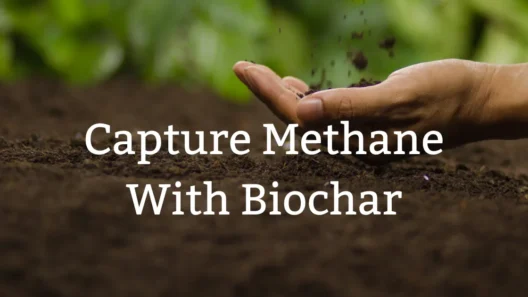In an era increasingly defined by climate challenges, the agricultural sector finds itself at a crossroads. But how can a farming technique as simple as no-till farming harness the power of sustainability to curtail the escalating threats of global warming? What if this method isn’t just a means to improve crop yields, but a formidable ally in the fight against climate change? Let us delve into the intricate dynamics of no-till farming and its potential to shape a greener future.
No-till farming, as its nomenclature suggests, eschews traditional tillage methods that disturb the soil. Instead of plowing, farmers plant seeds directly into the unbroken soil. This approach serves multiple purposes, both agronomically and ecologically. When one ponders the benefits of no-till farming, the most pressing question emerges: “How does this method contribute to mitigating greenhouse gas emissions?”
First, it is essential to comprehend the role of soil in carbon sequestration. The soil is not merely a static medium for plants; it is a vibrant ecosystem that harbors microorganisms, fungi, and organic matter. When soil is tilled, this ecosystem is disrupted. The disturbance can lead to the release of stored carbon dioxide, a potent greenhouse gas, back into the atmosphere. Conversely, no-till practices improve soil structure, allowing for improved water retention and fostering the conditions necessary for microbes to thrive. These microbes play a critical role in converting atmospheric carbon into organic matter that can be stored in the soil.
Moreover, without the constant disruption of tilling, no-till farms maintain a vegetative cover on the soil. This cover not only prevents erosion but also creates a symbiotic relationship between plants and soil. The root systems of cover crops enhance soil aeration, further promoting the microbial activity crucial for carbon storage. The result? A veritable carbon sink that helps in moderating climate change impacts.
The concept of regenerative agriculture, of which no-till is a subset, expands this discussion further. Regenerative agriculture focuses on holistic methods that restore and maintain the health of agricultural ecosystems. In adopting no-till practices, farmers can improve organic matter levels in the soil—essential for enhancing biodiversity and resilience. As these elements coalesce, the multi-faceted benefits lead to increased yields and decreased dependency on chemical fertilizers and pesticides, which often contribute to nitrous oxide emissions, another significant greenhouse gas.
However, transitioning to no-till farming is not without its challenges. Farmers may question the initial investment required for suitable equipment and potential shifts in crop management. How can they be assured that the long-term benefits will outweigh these early expenditures? It is crucial to address these concerns with concrete data and success stories from those who have navigated this path.
Evidence from various regions shows that farmers who have implemented no-till practices have observed increases in soil health and crop resilience. Such qualitative and quantitative assessments are essential in alleviating the anxieties attached to this transition. Additionally, financial incentives and educational programs can assist farmers in adapting to these sustainable practices without bearing the financial burden alone. The challenge, while significant, is not insurmountable.
Furthermore, the broader societal benefits of no-till farming are manifold. Reducing carbon emissions by improving soil quality directly correlates with national and global climate goals. When aggregated across numerous farms, the collective impact can lead to significant reductions in atmospheric carbon levels. This not only helps in the immediate fight against climate change but also ensures food security for future generations.
As we consider the implications of no-till farming on global warming, we must also bring in the discussions about policy and community engagement. Policymakers can play a critical role by facilitating research grants, creating incentive programs, and disseminating information regarding the long-term benefits of sustainable practices. Community initiatives that promote knowledge sharing among farmers can further bolster the adoption of no-till methods.
In essence, the plea for sustainable agricultural practices like no-till farming is not a mere suggestion but an imperative. As stewards of the land, farmers bear a unique responsibility to align their practices with the wider goals of environmental conservation. The intricate web of life within the soil can act as a powerful bulwark against the relentless tide of climate change. The question remains: Will this method be widely embraced, transforming our agriculture from a contributor to a solution for global warming?
Engaging in no-till farming may evoke apprehensions, but it is a proactive solution to combat climate change. Soil health, carbon sequestration, and regenerative practices all reside at the heart of this initiative. A greater understanding of these mechanisms can catalyze the much-needed adoption of no-till practices. Farmers and policymakers must collaborate, utilizing the available resources to ensure that the agricultural industry transitions towards a more sustainable and resilient future.
The time is ripe for action. Encouraging the adoption of no-till farming can serve as a clarion call for sustainable agriculture, inviting farmers worldwide to join a movement that can significantly mitigate global warming. The challenge is substantial, but with gainful policies and community engagement, the potential for resilience is boundless. Embracing no-till farming may very well be the key to safeguarding our planet for generations to come.







